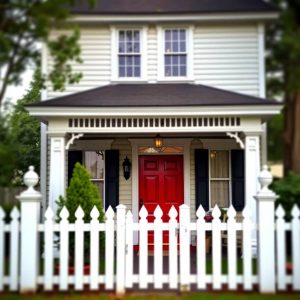
Home styles refer to the architectural design category a house falls into — for example, colonial, ranch, contemporary, bungalow, craftsman, Victorian, etc. It’s essentially how the house is built, shaped, laid out, and the type of materials and structural features it has.
In insurance, “home style” is not just a visual label — it influences construction cost, risk exposure, and the estimated cost to rebuild. Insurers use it when calculating your Dwelling Coverage (Coverage A) and sometimes your risk rating.
1. What “Home Style” Actually Means (in Insurance Terms)
Home style captures things like:
- Roof shape and complexity
- Number of stories
- Foundation type
- Building materials (stone, stucco, brick, wood frame)
- Architectural features (turrets, dormers, wrap-around porches, vaulted ceilings)
- Layout efficiency (simple rectangle vs complex footprint)
Examples
| Home Style | Structural Characteristics |
|---|---|
| Ranch | One story, wide layout, simple roof line |
| Colonial | Two stories, symmetrical design, more wall framing |
| Victorian | Decorative trim, complex roof angles, custom windows |
| Craftsman | Exposed beams, built-ins, wood trim, custom carpentry |
| Contemporary | Open floor plans, large glass areas, modern materials |
2. Why Insurers Care About Home Style
Insurance companies are not pricing your home based on market value.
They are pricing how much it would cost to rebuild it if it burned down.
Different home styles require different reconstruction skill levels and costs.
Example Cost Impact
| Home Style | Relative Rebuild Cost | Why |
|---|---|---|
| Ranch | Low | Straightforward layout, easier roofing and plumbing |
| Colonial | Medium | More framing, stairs, load-bearing walls |
| Craftsman or Victorian | High | Custom carpentry, special materials, complex roof lines |
So, if you live in a Craftsman with handcrafted woodwork, your insurance must cover skilled labor, not just generic materials.
3. Home Style Influences Insurance in Three Main Ways
A. Replacement Cost Estimate
Your coverage limit is partly based on style because style affects:
- Labor time
- Specialty trades required
- Material sourcing
Two houses with the same square footage can have different premiums if one has more ornate or custom design.
B. Risk & Repair Likelihood
Home style correlates with likelihood and severity of claims:
| Style Feature | Risk Concern |
|---|---|
| Complex roof design | Increased leak exposure and repair costs |
| Tall, multi-story layouts | Higher liability risk for falls |
| Large glass walls/windows | Expensive to replace + storm vulnerability |
C. Inspection & Underwriting Decisions
Certain home styles often come with age and maintenance patterns.
Example:
- Victorian homes → older electrical & plumbing → higher risk unless updated.
- Adobe & stucco homes → moisture and foundation cracking if not sealed.
- Log homes → require specialized repairs and pest control; some insurers won’t cover without proof of treatment.
4. How Adjusters Verify Home Style
They look at:
- Real estate records (MLS history)
- County property data
- Onsite inspections
- Satellite/drive-by photos
If they misclassify your home style, your coverage could be too low or too expensive.
5. What You Should Do
If you suspect your home style is classified incorrectly on your policy, ask for a Replacement Cost Estimate Sheet and verify:
✅ Number of stories
✅ Construction type (frame, brick, concrete, etc.)
✅ Roof type & slope
✅ Custom interior features (built-ins, molding, staircases, skylights)
Correcting these can lower premiums or increase protection.
Summary
| Concept | Explanation |
|---|---|
| Home Style | The architectural type/structure of your home |
| Why It Matters | Determines rebuild cost & risk profile |
| Insurance Effect | Impacts premium + coverage amount |
| Homeowner Benefit | Ensures your policy actually covers the real cost to rebuild |
